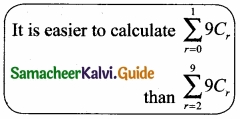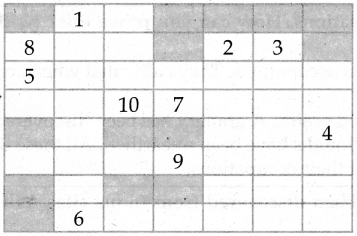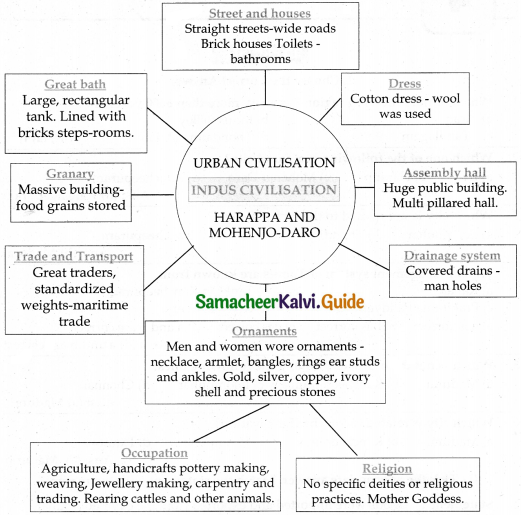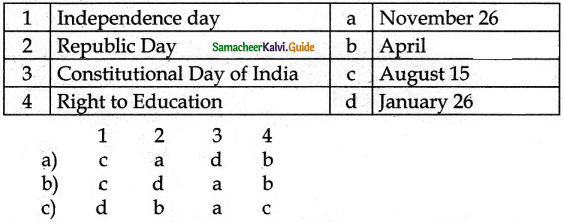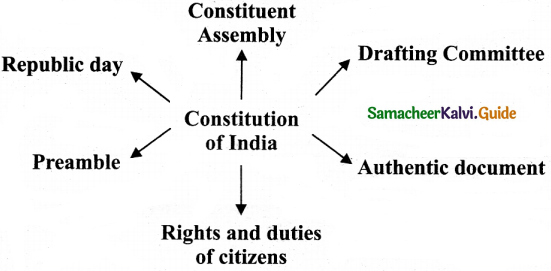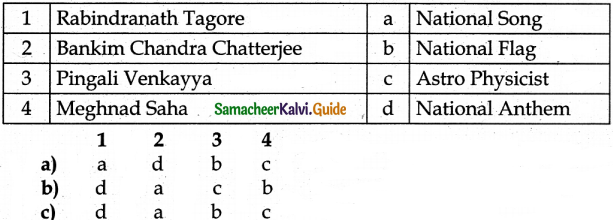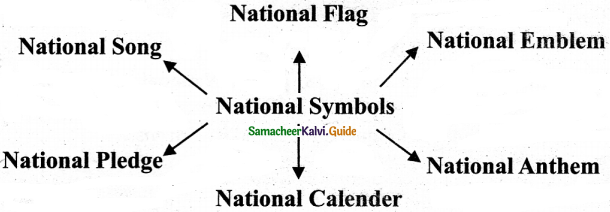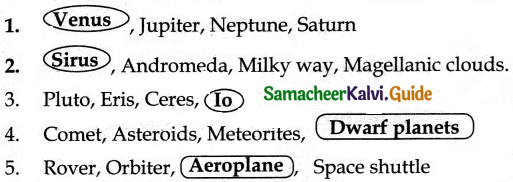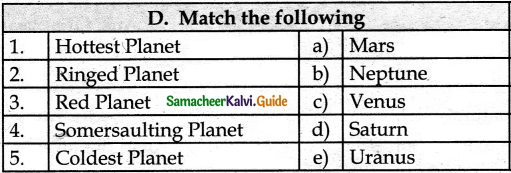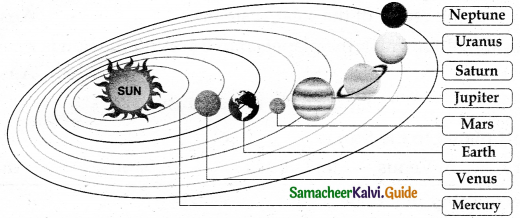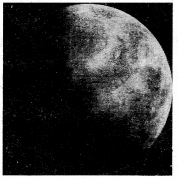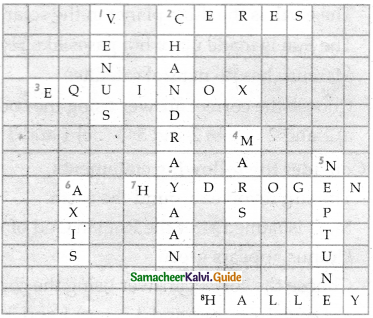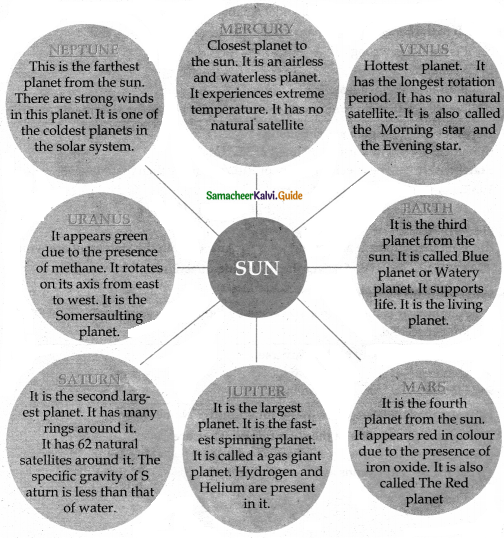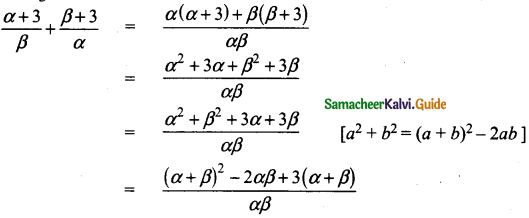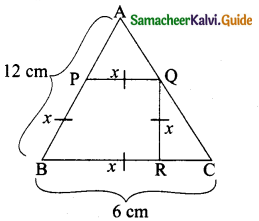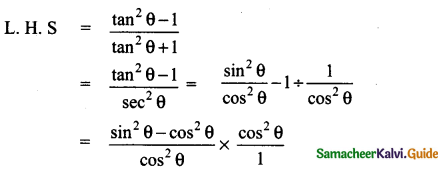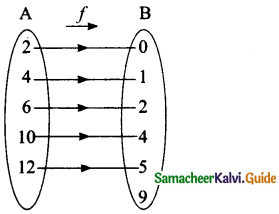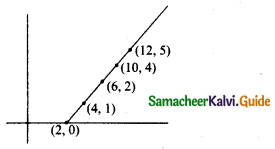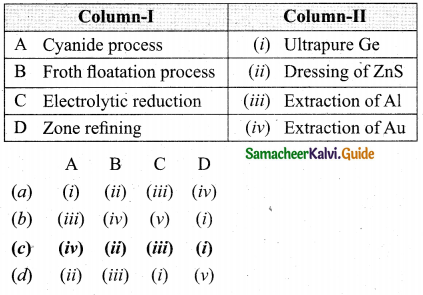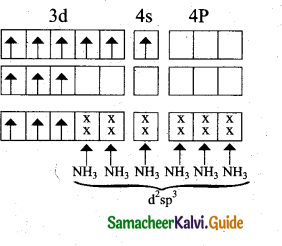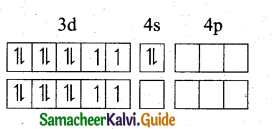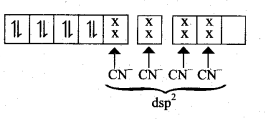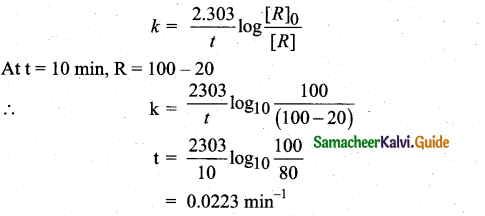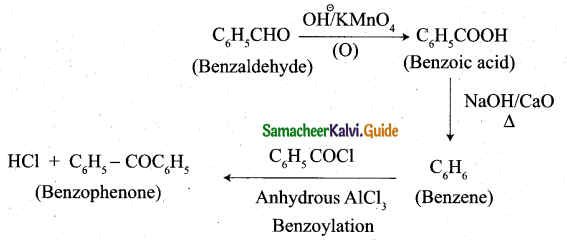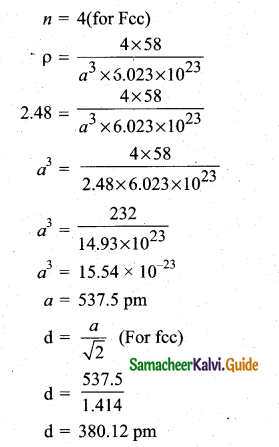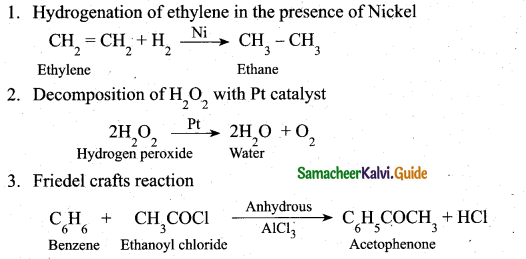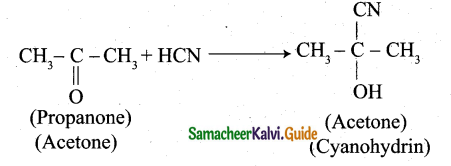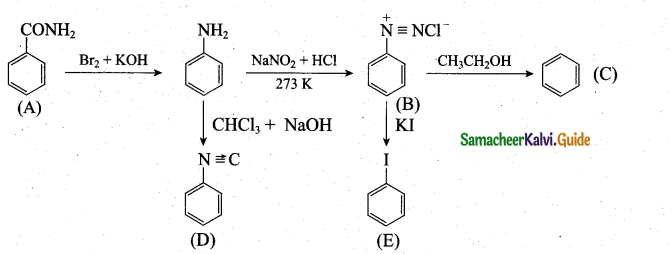Students can Download 10th Tamil Chapter 1.2 தமிழ்சொல் வளம் Questions and Answers, Summary, Notes, Samacheer Kalvi 10th Tamil Guide Pdf helps you to revise the complete Tamilnadu State Board New Syllabus, helps students complete homework assignments and to score high marks in board exams.
Tamilnadu Samacheer Kalvi 10th Tamil Solutions Chapter 1.2 தமிழ்சொல் வளம்
கற்பவை கற்றபின்
Question 1.
பின்வரும் நிலவகைகளின் பெயர்களுக்கான காரணங்களைக் கேட்டறிந்து வகுப்பறையில் பகிர்க.
தரிசு, சிவல், கரிசல், முரம்பு, புறம்போக்கு, சுவல், அவல்.
Answer:
தரிசு நிலம் : பயிர் செய்யாத நிலம்
சிவல் நிலம் : செந்நிலம் அல்லது சிவந்த நிலம்
கரிசல் நிலம் : கரிய நிறமுடைய மண் கொண்ட நிலம் கரிசல் நிலம் (அ) கரிந்த பாலை நிலம்
முரம்பு நிலம் : பருக்கைக் கற்கள் கொண்ட மேட்டு நிலம்
புறம்போக்கு நிலம் : ஊர்ப்புறத்தே குடிகள் வாழ்தலில்லாத நிலம்
சுவல் நிலம் : மேட்டு நிலம்
அவல் நிலம் : ‘அவல்’ என்பதன் பொருள் ‘பள்ளம்’. ஆகவே பள்ளமான நிலப்பகுதி அவல் என அழைக்கப்படுகிறது. விளை நிலமாகவும் அமைகிறது.
![]()
Question 2.
ஒரு பொருள் தரும் பல சொற்களைப் பட்டியலிடுக.
எ.கா: சொல்லுதல் – பேசுதல், விளம்புதல், செப்புதல், உரைத்தல், கூறல், இயம்பல், மொழிதல்
Answer:
அ) மலர்தல் – அவிழ்தல், அலர்தல், நெகிழ்தல், விள்ளல், விரிதல்.
ஆ) ஞாயிறு – I சூரியன், கதிரவன், வெய்யோன், பகலவன், பரிதி.
இ) அரசன் – கோ, கொற்றவன், வேந்தன், ராஜா, கோன்.
ஈ) அழகு – அணி, வடிவு, பொலிவு, எழில்.
உ) அடி- கழல், கால், தாள், பதம், பாதம்.
ஊ) தீ – அக்கினி, நெருப்பு, தழல்.
எ) அச்சம் – பயம், பீதி, உட்கு .
ஏ) துன்பம் – இன்னல், அல்லல், இடும்பை
ஐ) அன்பு – கருணை , நேசம், ஈரம், பரிவு, பற்று.
ஓ) செய்யுள் – பா, கவிதை, யாப்பு.
ஓ) பெண் – நங்கை, வனிதை, மங்கை.
ஔ) வயல் – கழனி, பழனம், செய்.
![]()
பாடநூல் வினாக்கள்
பலவுள் தெரிக
Question 1.
‘காய்ந்த இலையும் காய்ந்த தோகையும்’ நிலத்துக்கு நல்ல உரங்கள். இத்தொடரில் அடிக்கோடிட்ட பகுதி குறிப்பிடுவது
அ) இலையும் சருகும்
ஆ) தோகையும் சண்டும்
இ) தாளும் ஓலையும்
ஈ) சருகும் சண்டும்
Answer:
ஈ) சருகும் சண்டும்
Question 2.
வேர்க்கடலை, மிளகாய் விதை, மாங்கொட்டை ஆகியவற்றைக் குறிக்கும் பயிர்வகை
அ) குலை வகை
ஆ) மணி வகை
இ) கொழுந்து வகை
ஈ) இலை வகை
Answer:
ஆ) மணி வகை
![]()
குறுவினா
Question 1.
ஒரு தாற்றில் பல சீப்பு வாழைப்பழங்கள் உள்ளன.
ஒரு சீப்பில் பல தாறு வாழைப்பழங்கள் உள்ளன.
ஒரு சீப்பில் பல வாழைப்பழங்கள் உள்ளன.
மேற்கண்ட தொடர்களில் சரியான தொடர்களைச் சுட்டிக்காட்டி, எஞ்சிய பிழையான தொடரிலுள்ள பிழைக்கான காரணத்தை எழுதுக.
Answer:

சிறுவினா
Quesiton 1.
‘புளியங்கன்று ஆழமாக நடப்பட்டுள்ளது.’
இதுபோல் இளம் பயிர் வகை ஐந்தின் பெயர்களைத் தொடர்களில் அமைக்க.
Answer:
பிள்ளை – தென்னம் பிள்ளை வாங்கி வந்தேன் .
வடலி – காட்டில் பனை வடலியைப் பார்த்தேன்.
நாற்று – நெல் நாற்று நட்டேன்.
கன்று – வாழைக்கன்று நட்டேன்.
பைங்கூழ் – சோளப் பைங்கூழ் பசுமையாக உள்ளது.
நெடுவினா
Question 1.
தமிழின் சொல்வளம் பற்றியும் புதிய சொல்லாக்கத்திற்கான தேவை குறித்தும் தமிழ் மன்றத்தில் பேசுவதற்கான உரைக் குறிப்புகளை எழுதுக.
Answer:
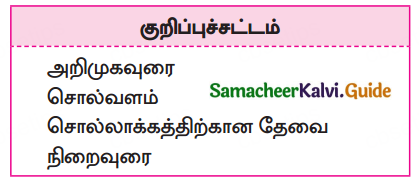
குறிப்புச்சட்டம் –
அறிமுகவுரை சொல்வளம் சொல்லாக்கத்திற்கான தேவை நிறைவுரை அறிமுகவுரை: வணக்கம்! அன்னைமொழியே! அழகார்ந்த செந்தமிழே! எனப் போற்றப்படும் தமிழ்மொழி பிறமொழிகளுக்கெல்லாம் தலைச்சிறந்த மொழியாகும். அம்மொழியின் சொல்வளத்தைப் பற்றிக் காண்போம்.
![]()
சொல்வளம்:
- இலக்கியச் செம்மொழிகளுக்கெல்லாம் பொதுவேனும், தமிழ்மட்டும் அதில் தலை சிறந்ததாகும்.
- தமிழ்ச்சொல் வளத்தைப் பலதுறைகளிலும் காணலாம்.
- ஒருபொருட் பல சொல் வரிசைகள் தமிழைத் தவிர வேறு எந்தத் திராவிட மொழிகளின் அகராதிகளிலும் காணப்படவில்லை .
- “பிற திராவிட மொழிகளுக்குரியனவாகக் கருதப்படும் சொற்களும் தமிழில் உள்” என்கிறார் கால்டுவெல்.
சொல்லாக்கத்திற்கான தேவை:
- சொல்லாக்கத்திற்கான தேவை என்பது அதன் பயன்பாட்டு முறையைக் கொண்டே அமைகிறது.
- இன்றைய அறிவியல் வளர்ச்சிக்கேற்ப நூல்களைப் புதிய சொல்லாக்கத்துடன் படைத்தல் வேண்டும்.
- இலக்கிய மேன்மைக்கும் மக்கள் அறிவுடையவர்களாக உயர்வதற்கும், புதிய சொல்லாக்கம் தேவை.
- மொழி என்பது உலகின் போட்டி போராட்டத்திற்கு ஒரு போர்க்கருவியாகும். அக்கருவி காலத்திற்கேற்ப மாற்றப்பட வேண்டும்.
- தமிழின் பெருமையும் மொழியின் சிறப்பும் குன்றாமல் இருக்க தமிழில் புதிய சொல்லாக்கம் தேவை.
- உலகின் பிற ஆய்வுச் சிந்தனைகளைத் தமிழ்ப்படுத்தி எழுதும் போது பிறமொழி அறியாத தமிழரும்
- அவற்றைக் குறித்து அறிந்துகொள்ள முடியும்.
- மொழியே கலாச்சாரத்தின் வழிகாட்டி. அதை நிலைநாட்ட புதிய சொல்லாக்கம் தேவை.
- மக்களிடையே பரந்த மனப்பான்மையையும், ஆளுமையையும் நிலைநாட்ட புதிய சொல்லாக்கம் தேவைப்படுகிறது.
- பிறமொழிச் சொற்கள் கலவாமல் இருக்க காலத்திற்கேற்ப புதிய கலைச்சொல்லாக்கம் ஏற்படுத்த வேண்டும்.
![]()
நிறைவுரை:
மென்மையான தமிழை மேன்மையான தமிழாக்க அறிவியல் தொழில்நுட்பச் சொற்களைத் தமிழ்ப்படுத்தி தமிழின் பெருமையை உலகிற்குக் கொண்டு செல்வோம்.

கூடுதல் வினாக்கள்
பலவுள் தெரிக
Question 1.
மரஞ்செடியினின்று பூ கீழே விழுந்த நிலையைக் குறிக்கும் சொல் எது?
அ) அரும்பு
ஆ) மலர்
இ) வீ
ஈ) செம்மல்
Answer:
இ) வீர
![]()
Question 2.
திராவிட மொழிகளின் ஒப்பியல் இலக்கணம் என்னும் நூலை எழுதியவர் யார்?
அ) பாவாணர்
ஆ) கால்டுவெல்
இ) இரா. இளங்குமரனார்
ஈ) திரு.வி.க
Answer:
ஆ) கால்டுவெல்
Question 3.
திருவள்ளுவர் தவச்சாலை அமைந்துள்ள இடம் எது?
அ) அல்லூர்
ஆ) திருவள்ளூர்
இ) கல்லூர்
ஈ) நெல்லூர்
Answer:
அ) அல்லூர்
Question 4.
குச்சியின் பிரிவு எச்சொல்லால் அழைக்கப்படுகிறது? அ) போத்து
ஆ) குச்சி
இ) இணுக்கு
ஈ) சினை
Answer:
இ) இணுக்கு
![]()
Question 5.
பொருத்துக.
1. தாள் – அ) குத்துச்செடி, புதர் முதலியவற்றின் அடி
2. தண்டு – ஆ) நெட்டி, மிளகாய்ச்செடி முதலியவற்றின் அடி
3. கோல் – இ) தண்டு, கீரை முதலியவற்றின் அடி
4. தூறு – ஈ) நெல், கேழ்வரகு முதலியவற்றின் அடி
அ) 1.ஈ 2.இ 3.ஆ 4.அ
ஆ) 1.ஆ 2.அ 3.ஈ 4-இ
இ) 1.இ 2.ஈ 3.அ 4.ஆ
ஈ) 1.அ 2.இ 3.ஆ 4.ஈ
Answer:
அ) 1.ஈ 2.இ 3.ஆ 4.அ
Question 6.
பொருத்துக.
1. தட்டு – அ) கரும்பின் அடி
2. கழி – ஆ) புளி, வேம்பு முதலியவற்றின் அடி
3. கழை – இ) கம்பு, சோளம்
முதலியவற்றின் அடி – ஈ) மூங்கிலின் அடி
அ) 1.ஆ 2.அ 3.ஈ. 4.இ
ஆ) 1.இ 2.அ 3.ஈ. 4.ஆ
இ) 1.ஈ 2.இ 3.அ 4.ஆ
ஈ) 1.இ 2.அ 3.ஆ 4.ஈ
Answer:
ஆ) 1.இ 2.அ 3.ஈ 4.ஆ
![]()
Question 7.
பொருத்துக.
1. கவை – அ) அடிமரத்தினின்று பிரியும் மாபெரும் கிளை
2. கொம்பு – ஆ) கிளையின் பிரிவு
3. சினை – இ) கவையின் பிரிவு
4. போத்து – ஈ) சினையின் பிரிவு
அ) 1.அ 2.இ 3.ஆ 4.ஈ
ஆ) 1.ஈ 2.இ 3.அ 4.ஆ
இ) 1.ஆ 2.அ 3.ஈ. 4.இ
ஈ) 1.இ 2.ஆ 3.அ 4.ஈ
Answer:
அ) 1.அ 2.இ 3.ஆ 4.ஈ
போத்து 8.
பொருந்தாதவற்றைக் கண்டறிக.
அ) தூறு
ஆ) கழி
இ) கழை
ஈ) கவை
Answer:
ஈ) கவை
![]()
Question 9.
பொருந்தாதவற்றைக் கண்டறிக.
அ) தாள்
ஆ) தண்டு
இ) கிளை
ஈ) கோல்
Answer:
இ) கிளை
Question 10.
பொருந்தாதவற்றைக் கண்டறிக.
அ) கவை
ஆ) தட்டு
இ) கொம்பு
ஈ) சினை
Answer:
ஆ) தட்டு
Question 11.
பொருந்தாத இணையைக் கண்டறிக.
அ) கவை – குச்சியின் பிரிவு
ஆ) கொம்பு – கவையின் பிரிவு
இ) போத்து – சினையின் பிரிவு
ஈ) குச்சி – போத்தின் பிரிவு
Answer:
அ) கவை-குச்சியின் பிரிவு
![]()
Question 12.
வேறுபட்ட குழுவினைக் கண்டறிக.
அ) தாள், தண்டு, கோல், தூறு
ஆ) கவை, கொம்பு, கிளை, சினை
இ) சுள்ளி, விறகு, வெங்கழி, கட்டை
ஈ) கழி, குச்சு, இணுக்கு, கழை
Answer:
ஈ) கழி, குச்சு, இணுக்கு, கழை
Question 13.
பொருத்துக.
1. இலை – அ) தென்னை , பனை முதலியவற்றின் இலை
2. தாள் – ஆ) சோளம், கம்பு முதலியவற்றின் அடி
3. தோகை – இ) புளி, வேம்பு முதலியவற்றின் இலை
4. ஓலை – ஈ) நெல், புல் முதலியவற்றின் இலை
அ) 1.ஈ 2.இ 3.அ 4.ஆ
ஆ) 1.இ 2.ஈ 3.ஆ 4.அ
இ) 1.ஆ 2.அ 3.ஈ 4.இ
ஈ) 1.இ 2.ஈ 3.அ 4.ஆ
Answer:
ஆ) 1.இ 2.ஈ 3.ஆ 4.அ
Question 14.
பொருத்தமற்ற ஒன்றைக் கண்டறிக.
அ) சண்டு
ஆ) சருகு
இ) தோகை
ஈ) கட்டை
Answer:
ஈ) கட்டை
![]()
Question 15.
பொருந்தாத இணையைக் கண்டறிக.
அ) சண்டு – காய்ந்த தாளும் தோகையும்
ஆ) சருகு – காய்ந்த இலை
இ) தாள் – புலி, வேம்பு முதலியவற்றின் இலை
ஈ) தோகை – சோளம், கம்பு முதலியவற்றின் இலை
Answer:
இ) தாள் – புலி, வேம்பு முதலியவற்றின் இலை
Question 16.
வேறுபட்ட குழுவினைக் கண்டறிக.
அ) தோகை, ஓலை, சண்டு, சருகு
ஆ) துளிர், முறி, கொழுந்து, கொழுந்தாடை
இ) பூம்பிஞ்சு, பிஞ்சு, வடு, கவ்வை
ஈ) கருக்கல், கச்சல், கொத்து, குலை
Answer:
ஈ) கருக்கல், கச்சல், கொத்து, குலை
Question 17.
தும்பி – இச்சொல்லின் பொருள்
அ) தும்பிக்கை
ஆ) வண்டு
இ) துந்துபி
ஈ) துன்பம்
Answer:
ஆ) வண்டு
![]()
Question 18.
தாவரங்களின் இலை வகைகளைக் குறிக்கும் சொற்களுள் – சரியானவற்றைச் தேர்ந்தெடு.
அ) இலை, தாள், தோகை, ஒலை, சண்டு, சருகு
ஆ) இலை, தோகை, தாள், தளிர், குருத்து, அரும்பு
இ) தாள், தோகை, தூறு, தட்டு, தண்டு, ஓலை
ஈ) இலை, தாள், ஓலை, தளிர், கொழுந்து, சண்டு
Answer:
அ) இலை, தாள், தோகை, ஒலை, சண்டு, சருகு
Question 19.
‘நாடும் மொழியும் நமதிரு கண்கள்’ என்று பாடியவர் யார்?
அ) பாரதியார்
ஆ) பாரதிதாசன் இ) பெருஞ்சித்திரனார்
ஈ) தேவநேயப் பாவாணர்
Answer:
அ) பாரதியார்
Question 20.
சொல்லாராய்ச்சியில் பாவாணரும் வியந்த பெருமகனார் யார்?
அ) தேவநேயப் பாவாணர்
ஆ) இளங்குமரனார்
இ) திரு.வி.கலியாணசுந்தரனார்
ஈ) மறைமலையடிகள்
Answer:
ஆ) இளங்குமரனார்
![]()
Question 21.
பாவாணர் நூலகம் ஒன்றை உருவாக்கியவர் யார்?
அ) தேவநேயப் பாவாணர்
ஆ) இளங்குமரனார்
இ) திரு.வி.க
ஈ) மறைமலையடிகள்
Answer:
ஆ) இளங்குமரனார்
Question 22.
தமிழ்வழித் திருமணங்களை நடத்தி வருபவர் யார்?
அ) தேவநேயப் பாவாணர்
ஆ) பெருஞ்சித்திரனார்
இ) இளங்குமரனார்
ஈ) பெருந்தேவனார்
Answer:
இ) இளங்குமரனார்
Question 23.
விழிகளை இழக்க நேரிட்டால் கூட தாய்த்தமிழினை இழந்துவிடக் கூடாது என்று எண்ணியவர் யார்?
அ) ஜி. யு. போப்
ஆ) வீரமாமுனிவர்
இ) இளங்குமரனார்
ஈ) பெருங்குமரனார்
Answer:
இ) இளங்குமரனார்
![]()
Question 24.
இளங்குமரனார் யார் போல இமைகளை மூடியபடி எழுதும் ஆற்றலைக் கற்றுக் கொண்டவர்?
அ) திரு.வி.க
ஆ) பாவாணர்
இ) மு.வ
ஈ) ஜீவா
Answer:
அ) திரு.வி.க
Question 25.
இமைகளை மூடியபடி எழுதும் ஆற்றலைக் கற்றுக்கொண்டவர்
அ) தமிழழகனார்
ஆ) அப்பாத்துரையார்
இ) தேவநேயப் பாவாணர்
ஈ) இரா.இளங்குமரனார்
Answer:
ஈ) இரா.இளங்குமரனார்
Question 26.
விழிகளை மூடியபடி எழுதும் ஆற்றல் வாய்ந்த வர்கள் ………… …………
அ) திரு.வி.க., இளங்குமரனார்
ஆ) தமிழழகனார், அப்பாத்துரையார்
இ) தேவநேயப் பாவாணர், கால்டுவெல்
ஈ) பெருஞ்சித்திரனார், சுந்தரனார்
Answer:
அ) திரு.வி.க., இளங்குமரனார்
![]()
Question 27.
‘தமிழ்த்தென்றல்’ என்று போற்றப்பட்டவர் யார்?
அ) இளங்குமரனார்
ஆ) பெருந்தேவனார்
இ) திரு.வி.க
ஈ) ம.பொ .சி
Answer:
இ) திரு.வி.க
Question 28.
உலகிலேயே ஒரு மொழிக்காக உலக மாநாடு நடத்திய முதல் நாடு எது? மாநாட்டுக்குரிய அம்முதல் மொழியும் தமிழே என்று கூறியவர் யார்?
அ) மலேசியா, க. அப்பாத்துரையார்
ஆ) சிங்கப்பூர், தேவநேயப் பாவாணர்
இ) இந்தியா, இளங்குமரனார் ஈ) கனடா, ஜி.யு. போப்
Answer:
அ) மலேசியா, க. அப்பாத்துரையார்
Question 29.
‘பன்மொழிப் புலவர்’ என்றழைக்கப்பட்டவர் யார்?
அ) க.அப்பாத்துரையார்
ஆ) தேவநேயப் பாவாணர்
இ) இளங்குமரனார்
ஈ) ஜி.யு.போப்
Answer:
அ) க.அப்பாத்துரையார்
![]()
Question 30.
சம்பா நெல்லின் உள் வகைகள் எத்தனை?
அ) 30
ஆ) 60
இ) 40
ஈ) 80
Answer:
ஆ) 60
Question 31.
‘மொழி ஞாயிறு’ என்றழைக்கப்பட்டவர் யார்? அ) க.அப்பாத்துரை
ஆ) தேவநேயப் பாவாணர்
இ) இளங்குமரனார்
ஈ) ஜி.யு.போப்
Answer:
ஆ) தேவநேயப் பாவாணர்
Question 32.
‘தமிழ்ச்சொல் வளம்’ என்னும் கட்டுரை இடம் பெற்றுள்ள நூல் எது?
அ) சொல்லாய்வுக் கட்டுரைகள், தேவநேயப் பாவாணர்
ஆ) தேவநேயம், இளங்குமரனார்
இ) மொழி மரபு, மு.வ ஈ) ஆய்வியல் நெறிமுறைகள், பொற்கோ
Answer:
அ) சொல்லாய்வுக் கட்டுரைகள், தேவநேயப் பாவாணர்
Question 33.
பொருத்திக் காட்டுக.
i) சுள்ளி – 1. காய்ந்த குச்சு (குச்சி)
iii) விறகு – 2. காய்ந்த சிறுகிளை
iii) வெங்கழி – 3. காய்ந்த கொம்பும் கவையும் அடியும்
iv) கட்டை – 4. காய்ந்த கழி
அ) 1, 2, 4, 3
ஆ) 2, 1. 3, 4
இ) 1, 3, 4, 2
ஈ) 4, 3, 2, 1
Answer:
அ) 1, 2, 4, 3
![]()
Question 34.
பொருத்திக் காட்டுக.
i) இளநீர் – 1. வாழைப்பிஞ்சு
ii) நுழாய் – 2. இளநெல்
iii) கருக்கல் – 3. இளம்பாக்கு
iv) கச்ச ல் – 4. முற்றாத தேங்காய்
அ) 4, 3, 2, 1
ஆ) 2, 3, 4, 1
இ) 1, 2, 3, 4
ஈ) 3, 4, 2, 1
Answer:
அ) 4, 3, 2, 1
Question 35.
பொருத்திக் காட்டுக.
i) சிவியல் – சூட்டினால் பழுத்த பிஞ்சு
ii) அளியல் – பதராய்ப் போன மிளகாய்
iii) சொண்டு – குளுகுளுத்த பழம்
iv) வெம்பல் – சுருங்கிய பழம்
அ) 4, 3, 2, 1
ஆ) 3, 2, 1, 4
இ) 1, 3, 4, 2
ஈ) 1, 3, 4, 2
Answer:
அ) 4, 3, 2, 1
![]()
Question 36.
ஒரு நாட்டு வளத்திற்குத் தக்கபடியே, அந்நாட்டு மக்களுக்கு எது அமைந்திருக்கும்? அ) அன்பொழுக்கம்
ஆ) அறிவொழுக்கம்
இ) களவொழுக்கம்
ஈ) கற்பொழுக்கம்
Answer:
ஆ) அறிவொழுக்கம்
Question 37.
செந்தமிழ்ச் சொற்பிறப்பியல் அகரமுதலித் திட்ட இயக்குநராகப் பணியாற்றியவர் யார்?
அ) தேவநேயப் பாவாணர்
ஆ) வெள்ளைவாரணார்
இ) இளங்குமரனார்
ஈ) பெருந்தேவனார்
Answer:
அ) தேவநேயப் பாவாணர்
Question 38.
உலகத் தமிழ்க் கழகத்தை நிறுவித் தலைவராக இருந்தவர் யார்?
அ) தனிநாயகம் அடிகள்
ஆ) தேவநேயப் பாவாணர்
இ) இளங்குமரனார்
ஈ) மு. வரதராசனார்
Answer:
ஆ) தேவநேயப் பாவாணர்
Question 39.
போர்ச்சுகீசு நாட்டின் தலைநகர் எது?
அ) லெபனான்
ஆ) லிசுபன்
இ) கெய்ரோ
ஈ) ஹராரே
Answer:
ஆ) லிசுபன்
![]()
Question 40.
இந்திய மொழிகளிலேயே மேலை நாட்டு எழுத்துருவில் முதலில் அச்சேறிய மொழி எது?
அ) இந்தி
ஆ) தமிழ்
இ) தெலுங்கு
ஈ) வங்காளம்
Answer:
ஆ) தமிழ்
Question 41.
கார்டிலா என்னும் போர்ச்சுகீசிய நூல் தமிழில் மொழிபெயர்க்கப்பட்டதைக் குறிப்பிடுவது எது?
அ) ஆறாம் உலகத் தமிழ் மாநாட்டு மலர்
ஆ) நான்காம் உலகத் தமிழ் மாநாட்டு மலர்
இ) செம்மொழி மாநாட்டு மலர்
ஈ) தமிழிலக்கிய வரலாறு மு.வ.
Answer:
அ) ஆறாம் உலகத் தமிழ் மாநாட்டு மலர்
Question 42.
கொழுந்தாடை என்பது யாது?
அ) நெல், புல் ஆகியவற்றின் கொழுந்து
ஆ) புளி, வேம்பு முதலியவற்றின் கொழுந்து
இ) தென்னை, பனை முதலியவற்றின் கொழுந்து
ஈ) கரும்பின் நுனிப்பகுதி
Answer:
ஈ) கரும்பின் நுனிப்பகுதி
![]()
குறுவினா
Question 1.
தாவரத்தின் அடிப்பகுதியைக் குறிப்பதற்கான சொற்கள் யாவை?
Answer:
தாள், தண்டு , கோல், தூறு, தட்டு, கழி, கழை, அடி.
Question 2.
தாவரங்களின் அடியிலிருந்து பிரிந்து செல்லும் பிரிவுகளுக்கு வழங்கப்படும் சொற்கள் யாவை?
Answer:
கவை, கொம்பு, கொப்பு, கிளை, சினை, போத்து, குச்சி, இணுக்கு.
Question 3.
தாவரங்களின் காய்ந்த பகுதிகளுக்கு வழங்கப்படும் சொற்கள் யாவை?
Answer:
சுள்ளி, விறகு, வெங்கழி, கட்டை.
Question 4.
தாவரங்களின் இலை வகைகளைக் குறிக்கும் சொற்கள் யாவை?
Answer:
இலை, தாள், தோகை, ஓலை, சண்டு, சருகு.
Question 5.
தாவரங்களின் நுனிப்பகுதியைக் குறிக்கும் சொற்கள் யாவை? (கொழுந்து வகை)
Answer:
- துளிர் அல்லது தளிர்
- குருத்து
- முறி அல்லது கொழுந்து
- கொழுந்துதாடை
![]()
Question 6.
பூவின் நிலைகளைக் குறிக்கும் சொற்கள் யாவை?
Answer:
அரும்பு, போது, மலர், வீ, செம்மல்.
Question 7.
தாவரங்களின் பிஞ்சு வகைகளுக்கு வழங்கப்படும் சொற்கள் யாவை?
Answer:
பூம்பிஞ்சு, பிஞ்சு, வடு, மூசு, கவ்வை, குரும்பை, முட்டுக்குரும்பை, இளநீர், நுழாய், கருக்கல், கச்சல்.
Question 8.
தாவரங்களின் குலை வகைகளைக் குறிப்பதற்கான சொற்கள் யாவை?
Answer:
கொத்து, குலை, தாறு, கதிர், அலகு அல்லது குரல், சீப்பு.
![]()
Question 9.
கெட்டுப்போன காய்க்கும் கனிக்கும் தாவரத்திற்கேற்ப வழங்கப்படும் சொற்கள் யாவை?
Answer:
சூம்பல், சிவியல், சொத்தை, வெம்பல், அளியல், அழுகல், சொண்டு, தேரைக்காய், அல்லிக்காய், ஒல்லிக்காய், கோட்டான்காய் (அ) கூகைக்காய்.
Question 10.
பழங்களின் மேற்பகுதியினைக் குறிக்க வழங்கும் சொற்கள் யாவை?
Answer:
தொலி, தோல், தோடு, ஓடு, குடுக்கை, மட்டை, உமி, கொம்மை.
Question 11.
தானியங்களுக்கு வழங்கப்படும் சொற்கள் யாவை?
Answer:
கூலம், பயறு, கடலை, விதை, காழ், முத்து, கொட்டை, தேங்காய், முதிரை.
Question 12.
தாவரங்களின் இளமைப் பெயர்களை எழுது.
Answer:
நாற்று, கன்று, குருத்து, பிள்ளை , குட்டி, பைங்கூழ், மடலி (அ) வடலி.
Question 13.
கோதுமையின் வகைகளில் சிலவற்றைக் கூறு.
Answer:
சம்பாக்கோதுமை, குண்டுக்கோதுமை, வாற்கோதுமை.
![]()
Question 14.
சம்பா நெல் வகைகளை எழுதுக.
Answer:
ஆவிரம்பூச்சம்பா, ஆனைக் கொம்பன் சம்பா, குண்டுச் சம்பா, குதிரைவாலிச் சம்பா, சிறுமணிச்சம்பா, சீரகச்சம்பா முதலிய அறுபது வகைகள் சம்பாவில் உள்ளன.
Question 15.
இரா. இளங்குமரனாரின் தமிழ்ப்பணியைத் தரம் உயர்த்திய நல்முத்துகள் யாவை?
Answer:
- இலக்கண வரலாறு
- தமிழிசை இயக்கம்
- தனித்தமிழ் இயக்கம்
- பாவாணர் வரலாறு
- குண்டலகேசி உரை
- யாப்பருங்கலம் உரை
- புறத்திரட்டு உரை
- திருக்குறள் தமிழ் மரபுரை
- காக்கைப் பாடினிய உரை
- தேவநேயம்
முதலியன இரா. இளங்குமரனாரின் தமிழ்ப்பணியைத் தரமுயர்த்திய நல்முத்துகளாகும்.
![]()
Question 16.
உலகத்தமிழ் மாநாடு குறித்து க. அப்பாத்துரையார் கூறுவன யாவை?
Answer:
“உலகத்திலேயே ஒரு மொழிக்காக உலக மாநாடு நடத்திய முதல் நாடு மலேசியா. அம்மாநாட்டுக்குரிய முதல் மொழியும் தமிழே!” என்று க. அப்பாத்துரையார் கூறுகின்றார்.
சிறுவினா
Question 1.
தேவநேயப்பாவாணர் பற்றி நீவீர் அறிந்தவற்றை எழுதுக.
Answer:
பெயர் : தேவநேயப் பாவாணர்
சிறப்புப்பெயர் : மொழிஞாயிறு
படைப்புகள் : இலக்கணக் கட்டுரைகள், மொழியாராய்ச்சிக் கட்டுரைகள், சொல்லாய்வுக் கட்டுரைகள்.
பணி : செந்தமிழ்ச் சொற்பிறப்பியல் அகர முதலித் திட்ட இயக்குநர், உலகத் தமிழ்க் கழகத் தலைவர்
Question 2.
இரா. இளங்குமரனார் குறித்து நீவீர் அறிந்தவற்றைக் கூறுக.
Answer:
பெயர் : இரா. இளங்குமரனார்
தமிழ்ப்பற்று : விழிகளை இழக்க நேரிட்டால் கூட தாய்த்தமிழினை இழந்துவிடக் கூடாது என்றார்.
திரு.வி.க வழி : தமிழ்த்தென்றல் திரு.வி.க. போல் இமைகளை மூடியபடி எழுதும் ஆற்றலைக் கொண்டவர்.
சிறந்த நூல்கள் : இலக்கண வரலாறு, தமிழிசை இயக்கம், தனித்தமிழ் இயக்கம், பாவாணர் வரலாறு, குண்டலகேசி உரை, யாப்பருங்கலம் உரை, திருக்குறள் தமிழ் மரபுரை, புறத்திரட்டு உரை, காக்கைப் பாடினிய உரை, தேவநேயம்
பிற செய்திகள் : திருவள்ளுவர் தவச்சாலை மற்றும் பாவாணர் நூலகத்தை அமைத்தார்.
![]()
Question 3.
கார்டிலா – நூல் குறிப்பு வரைக.
Answer:
- 1554-ல் போர்ச்சுகீசு நாட்டில் தமிழில் முதன்முதலில் மொழிபெயர்க்கப்பட்ட நூல்.
- ரோமன் வரிவடிவில் அச்சிடப்பட்ட நூல்.
- இதனை Carthila de lingoa Tamul e Portugues என்பர்.
- இந்திய மொழிகளுள் மேலை நாட்டு மொழிகளில் அச்சிடப்பட்ட முதல் நூல் தமிழ்மொழி நூலே.
Question 4.
எந்தெந்தத் தாவரங்களின் அடிப்பகுதி என்னென்ன பெயர்களால் அழைக்கப்படுகிறது எனப் பட்டியலிடுக.
Question
- தாள் – நெல், கேழ்வரகு முதலியவற்றின் அடி
- தண்டு – கீரை, வாழையின் அடி
- கோல் – நெட்டி, மிளகாய்ச் செடியின் அடி
- துறு – குத்துச்செடி, புதர் முதலியவற்றின் அடி
- தட்டு (அ) தட்டை – கம்பு, சோளம் முதலியவற்றின் அடி
- கழி – கரும்பின் அடி
- கழை – மூங்கிலின் அடி
- அடி – புளி, வேம்புவின் அடி
Question 5.
தாவரங்களின் அடியிலிருந்து பிரிந்து செல்லும் பிரிவுகளுக்கு வழங்கும் சொற்களையும் அவை
தாவரங்களின் எப்பகுதிக்குப் பொருந்தும் என்பதையும் எழுது.
Answer:
- கவை – மரத்தினின்று பிரியும் மாபெரும் கிளை
- கொம்பு (அ) கொப்பு – கவையின் பிரிவு
- கிளை – கொம்பின் பிரிவு
- சினை – கிளையின் பிரிவு
- போத்து – சினையின் பிரிவு
- குச்சி – போத்தின் பிரிவு
- இணுக்கு – குச்சியின் பிரிவு
![]()
Question 6.
எந்தெந்தத் தாவரங்களின் இலைகள் என்னென்ன பெயர்களால் அழைக்கப்படுகின்றன என்பதைப்
பட்டியலிடுக.
Answer:
- புளி, வேம்பு – இலை
- தென்னை, பனை – ஓலை
- நெல், புல் – தாள்
- காய்ந்த இலை – சருகு
- சோளம், கரும்பு – தோகை
Question 7.
தாவரங்களின் பிஞ்சு வகைகளுக்கு வழங்கப்படும் பெயர்களையும் அவை எத்தாவரப் பிஞ்சுகளுக்குப்
பொருந்தும் என்பதையும் கூறு.
Answer:
(பூம்பிஞ்சு -பூவோடு கூடிய இளம்பிஞ்சு, பிஞ்சு – இளம்காய்)
- வடு – மாம்பிஞ்சு
- இளநீர் – முற்றாத தேங்காய்
- மூசு – பலாப்பிஞ்சு
- நுழாய் – இளம்பாக்கு
- கவ்வை – எள் பிஞ்சு
- கருக்கல் – இளநெல்
- குரும்பை – தென்னை, பனை பிஞ்சு
- கச்சல் – வாழைப்பிஞ்சு
![]()
Question 8.
எந்தெந்தத் தாவரங்களின் குலைகள் என்னென்ன பெயர்களால் அழைக்கப்படுகின்றன எனப் பட்டியலிடுக.
Answer:
- கொத்து – அவரை, துவரை
- கதிர் – கேழ்வரகு, சோளக் கதிர்
- குலை – கொடி முந்திரி
- அலகு (அ) குரல் – நெல், தினைக் கதிர்
- தாறு – வாழைக்குலை
- சீப்பு – வாழைத் தாற்றின் பகுதி
Question 9.
கெட்டுப்போன காய்க்கும் கனிக்கும் தாவரத்திற்கேற்ப வழங்கப்படும் பெயர்கள் யாவை?
Answer:
- சூம்பல் – நுனியில் சுருங்கிய காய்
- சிவியல் – சுருங்கிய பழம்
- சொத்தை – புழுபூச்சி அரித்த காய் (அ) கனி
- வெம்பல் – சூட்டினால் பழுத்த பிஞ்சு
- அளியல் – குளுகுளுத்த பழம்
- அழுகல் – குளுகுளுத்து நாறிய பழம் (அ) காய்
- சொண்டு – பதறாய்ப் போன மிளகாய்
- கோடான்காய் (அ) கூகைக்காய் – கோட்டான் அமர்ந்ததினால் கெட்ட காய்
- தேரைக்காய் – தேரை அமர்ந்ததினால் கெட்டகாய்
- அல்லிக்காய் – தேரை அமாந்ததினால் கெட்ட தேங்காய்
- ஒல்லிக்காய் – தென்னையில் கெட்ட காய்
Question 10.
பழங்களின் மேற்பகுதியினைக் குறிக்க அவற்றின் தன்மைக்கேற்ப தாவரங்களுக்கு வழங்கப்படும் சொற்களை எழுதுக.
Answer:
- தொலி – மிக மெல்லியது
- குடுக்கை – சுரையின் ஓடு
- தோல் – திண்ணமானது
- மட்டை – தேங்காய் நெற்றின் மேற்பகுதி
- தோடு – வன்மையானது
- உமி – நெல், கம்பு ஆகியவற்றின் மூடி
- ஓடு – மிக வன்மையானது
- கொம்மை – வரகு, கேழ்வரகு உமி
![]()
Question 11.
தானியங்களுக்குத் தாவரத்திற்கேற்ப வழங்கப்படும் சொற்கள் யாவை?
Answer:
- கூலம் – நெல், புல் தானியங்கள்
- பயறு – அவரை, உளுந்து
- கடலை – வேர்க்கடலை
- விதை – கத்தரி, மிளகாய் வித்து, கொண்டைக் கடலை
- காழ் – புளி, காஞ்சிரை வித்து
- முத்து – வேம்பு, ஆமணக்கு வித்து
- கொட்டை – மா, பனை வித்து
- தேங்காய் – தென்னை வித்து
- முதிரை – அவரை, துவரை பயறுகள்
Question 12.
தாவரங்களின் இளம் பருவத்திற்கான சொற்களையும் அதற்குரிய தாவரங்களின் பெயர்களையும் எழுது.
Answer:
- நாற்று – நெல், கத்திரியின் இளநிலை
- கன்று – மா, புளி, வாழையின் இளநிலை
- குருத்து – வாழையின் இளநிலை
- பிள்ளை – தென்னையின் இளநிலை
- குட்டி – விளாவின் இளநிலை .
- மடலி (அ) வடலி – பனையின் இளநிலை
- பைங்கூழ் – நெல், சோளத்தின் இளநிலை
Question 13.
தமிழ்ச் சொல் வளம் குறித்து கால்டுவெல் குறிப்பிடும் கருத்தை எழுதுக.
Answer:
தமிழல்லாத திராவிட மொழிகளின் அகராதிகளை ஆராயும்போது, தமிழிலுள்ள ஒருபொருட் பலசொல் வரிசைகள் அவற்றில் இல்லாக்குறை எந்தத் தமிழறிஞர்க்கும் மிகத் தெளிவாகத் தோன்றும்.
தமிழில் மட்டும் பயன்படுத்தப்பட்டுத் தமிழுக்கே சிறப்பாக உரியனவாகக் கருதப்படும் சொற்கள் மட்டுமன்றித் தெலுங்கு, கன்னடம் முதலிய பிற திராவிட மொழிகளுக்குரியனவாகக் கருதப்படும் சொற்களும் தமிழில் உள என்கிறார் கால்டுவெல்.
![]()
Question 14.
எவற்றை அமைத்துக்கொள்வது, சிறந்த மதிநுட்பமும் பண்பாடும் உடைய மக்கட்கே இயலும்?
Answer:
திருந்திய மக்களை மற்ற உயிரினின்றும் பிரித்துக் காட்டுவது மொழியாதலின், அதுவே ஒரு நாட்டாரின் அல்லது இனத்தாரின் நாகரிகத்தை அளந்தறிவதற்கும் சிறந்த வழியாகும்.
பொருளைக் கூர்ந்து நோக்கி நுண்பாகுபாடு செய்து அவற்றிற்கேற்பப் பருப்பொருட் சொற்களும், நுண்பொருட்சொற்களும் அமைத்துக்கொள்வது, சிறந்த மதிநுட்பமும் பண்பாடும் உடைய மக்கட்கே இயலும்.
Question 15.
பழங்காலத்தில் விளைந்த அளவு இக்காலத்தில் விளையாதவை எவை? விளைந்து வருபவை எவை?
Answer:
பழங்காலத்தில் விளைந்த அளவு பொன்னும் மணியும் முத்தும் பவளமும் இன்று விளையாவிடினும் அருமையான கூலங்களும் சிறுகூலங்களும் இன்றும் தென்றமிழ் நாட்டில் விளைந்து வருகின்றன.
நெடுவினா
Question 1.
தமிழ், சொல் வளமுடையதென்றும் தமிழ்நாடு பொருள் வளமுடையதென்றும் தெளிவாக விளங்குவதற்கான காரணங்கள் சிலவற்றைத் தொகுத்தெழுதுக.
Answer:
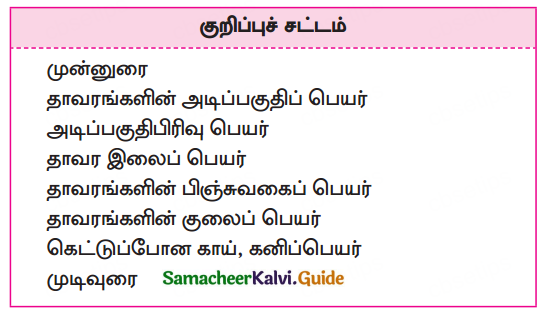
முன்னுரை:
தமிழ், சொல் வளமுடையது, தமிழ்நாடு பொருள் வளமுடையது என்பதைப் பாவாணர், சொல்லாய்வுக் கட்டுரைகள் என்ற நூலில், ‘தமிழ்ச் சொல்வளம்’ என்னும் கட்டுரையில் எடுத்துரைக்கிறார்.
தாவரங்களின் அடிப்பகுதிப் பெயர்:
- தாள் – நெல், கேழ்வரகு முதலியவற்றின் அடி
- தண்டு – கீரை, வாழையின் அடி
- கோல் – நெட்டி, மிளகாய்ச் செடியின் அடி
- தூறு- குத்துச்செடி, புதர் முதலியவற்றின் அடி
- தட்டு (அ) தட்டை – கம்பு, சோளம் முதலியவற்றின் அடி
- கழி – கரும்பின் அடி
- கழை – மூங்கிலின்
- அடி – புளி, வேம்புவின் அடி
![]()
அடிப்பகுதிபிரிவு பெயர்:
- கவை – மரத்தினின்று பிரியும் மாபெரும் கிளை
- கொம்பு (அ) கொப்பு – கவையின் பிரிவு
- கிளை – கொம்பின் பிரிவு
- சினை – கிளையின் பிரிவு
- போத்து – சினையின் பிரிவு
- குச்சி – போத்தின் பிரிவு
- இணுக்கு – குச்சியின் பிரிவு
தாவர இலைப் பெயர்:
- புளி, வேம்பு – இலை
- தென்னை – பனை
- நெல், புல் – தா ள்
- காய்ந்த இலை – சருகு
- சோளம், கரும்பு – தோகை
தாவரங்களின் பிஞ்சுவகைப் பெயர்:
(பூம்பிஞ்சு -பூவோடு கூடிய இளம்பிஞ்சு, பிஞ்சு – இளம்காய்)
- வடு – மாம்பிஞ்சு
- இளநீர் – முற்றாத தேங்காய்
- மூசு – பலாப்பிஞ்சு
- நுழாய் – இளம்பாக்கு
- கவ்வை – எள் பிஞ்சு
- கருக்கல் – இளநெல்
- குரும்பை – தென்னை, பனை பிஞ்சு
- கச்சல் – வாழைப்பிஞ்சு
தாவரங்களின் குலைப் பெயர்:
- கொத்து – அவரை, துவரை
- கதிர் – கேழ்வரகு, சோளக் கதிர்
- குலை – கொடி முந்திரி
- அலகு (அ) குரல் – நெல், தினைக் கதிர்
- தாறு – வாழைக்குலை
- சீப்பு – வாழைத் தாற்றின் பகுதி
![]()
கெட்டுப்போன காய், கனிப்பெயர்:
- சூம்பல் – நுனியில் சுருங்கிய காய்
- சிவியல் – சுருங்கிய பழம்
- சொத்தை – புழுபூச்சி அரித்த காய் (அ) கனி
- வெம்பல் – சூட்டினால் பழுத்த பிஞ்சு
- அளியல் – குளுகுளுத்த பழம்
- அழுகல் – குளுகுளுத்து நாறிய பழம் (அ) காய்
- சொண்டு – பதறாய்ப் போன மிளகாய்
- கோடான்காய் (அ) கூகைக்காய் – கோட்டான் அமர்ந்ததினால் கெட்ட காய்
- தேரைக்காய் – தேரை அமர்ந்ததினால் கெட்டகாய்
- அல்லிக்காய் – தேரை அமாந்ததினால் கெட்ட தேங்காய்
- ஒல்லிக்காய் – தென்னையில் கெட்ட காய்
![]()
முடிவுரை:
மேற்குறித்த பெயர்கள் மூலம், தமிழின் சொல்வளத்தையும் தமிழ்நாட்டின் பொருள் வளத்தையும் நன்கு அறிய முடிகின்றது.


